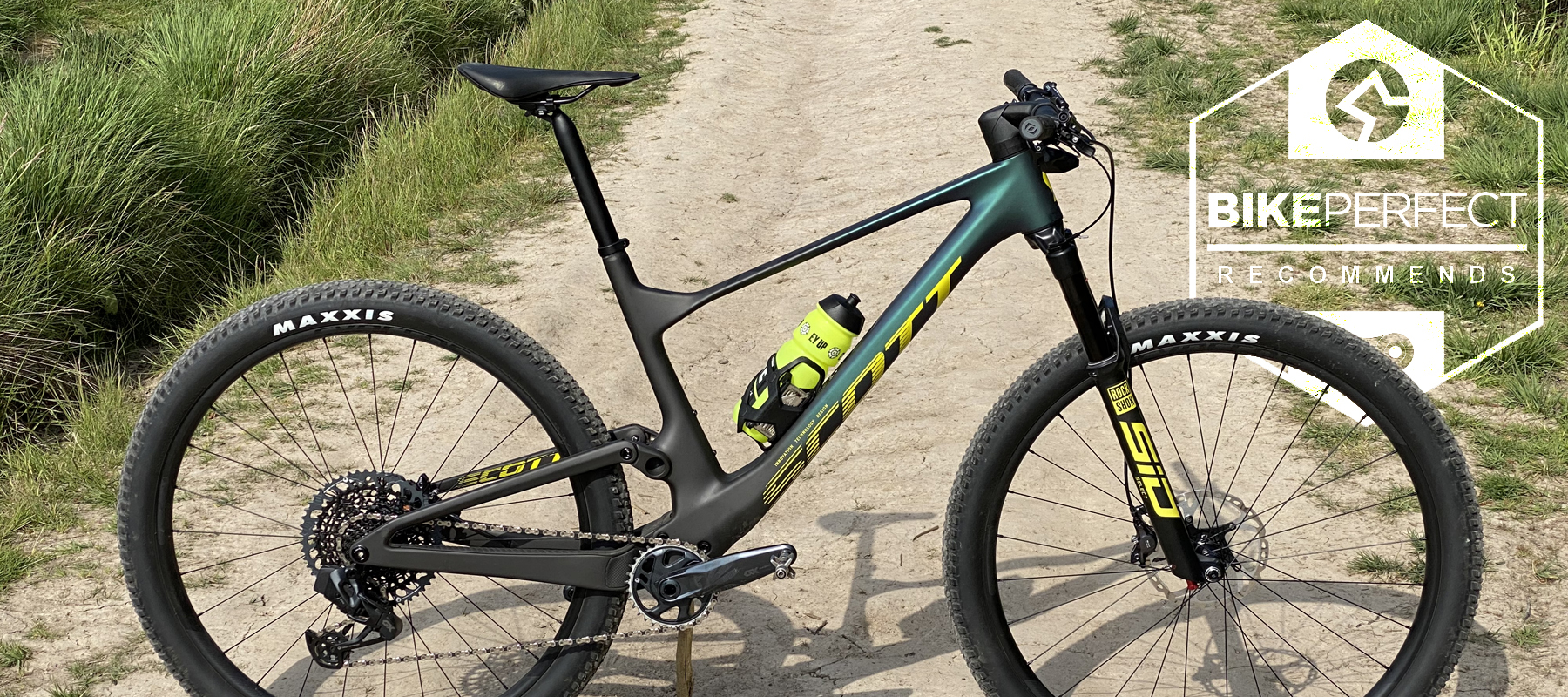Bike Perfect Verdict
The new Scott Spark's totally sorted suspension, poised handling, wireless drivetrain and race-informed spec make it a truly phenomenal bike on track or trail. Most riders will want to add a dropper post to unlock its full potential
Pros
- +
Totally sorted high-speed suspension
- +
Remote suspension lockout front and rear
- +
Sweetly balanced, adjustable handling
- +
Clean internal shock aesthetics
- +
Tight tracking frame and fork
- +
Wireless gears
- +
Big volume tires and rims
- +
Excellent spec value
- +
Competitive weight
Cons
- -
Most riders will want a dropper
- -
Press-fit bottom bracket needs regular checks
- -
Not the lightest Spark frame
Why trust BikePerfect
Scott’s Spark has been one of the best full-suspension mountain bikes for the past five years, dominating the cross-country landscape thanks to none other than Nino Schurter. This new iteration packages all that experience and multi-mode shock tech into a new, radically sleek chassis and cleans it up further with wireless gears for a beautiful and blisteringly quick result. It definitely deserves a dropper post though.
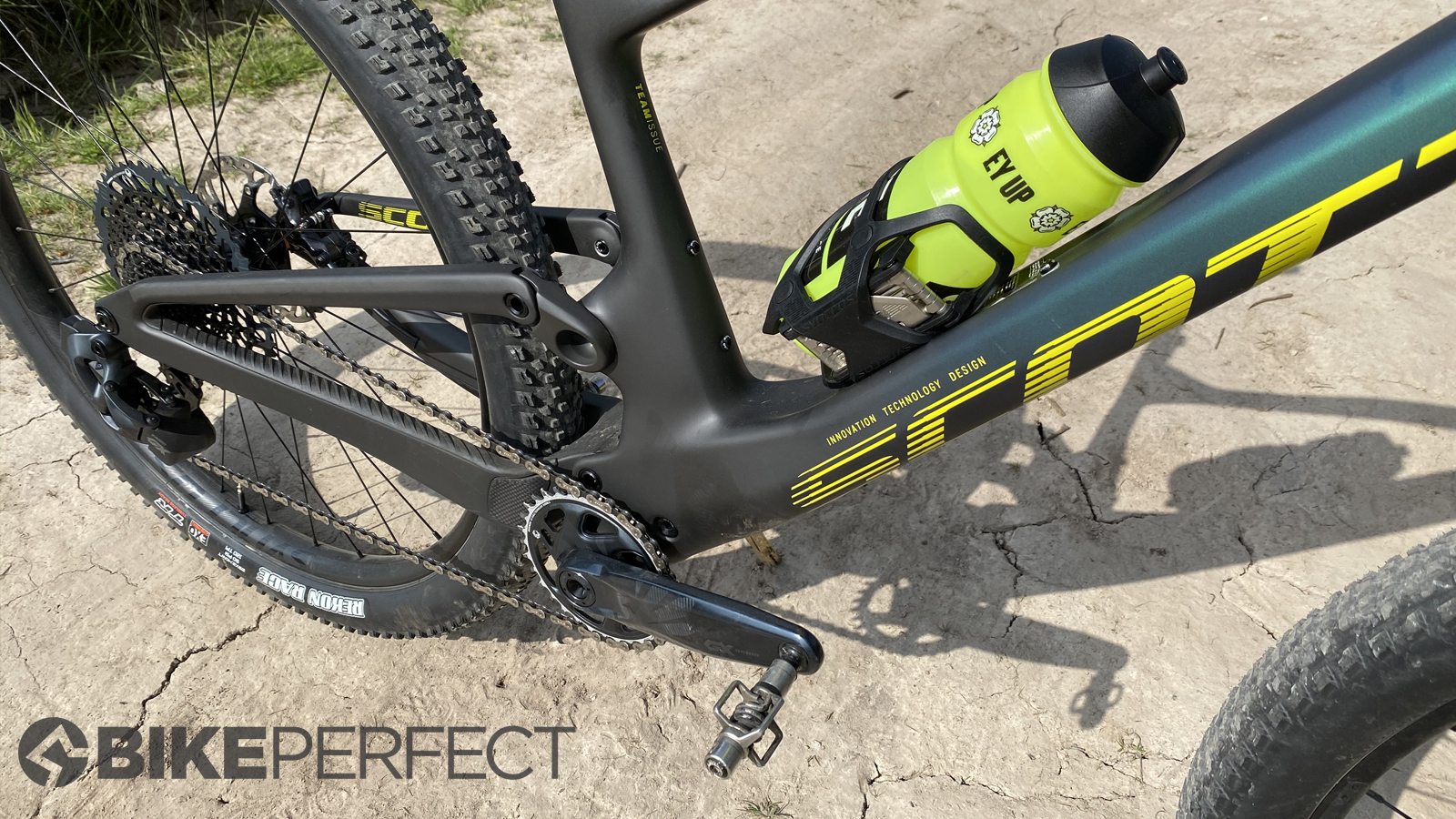
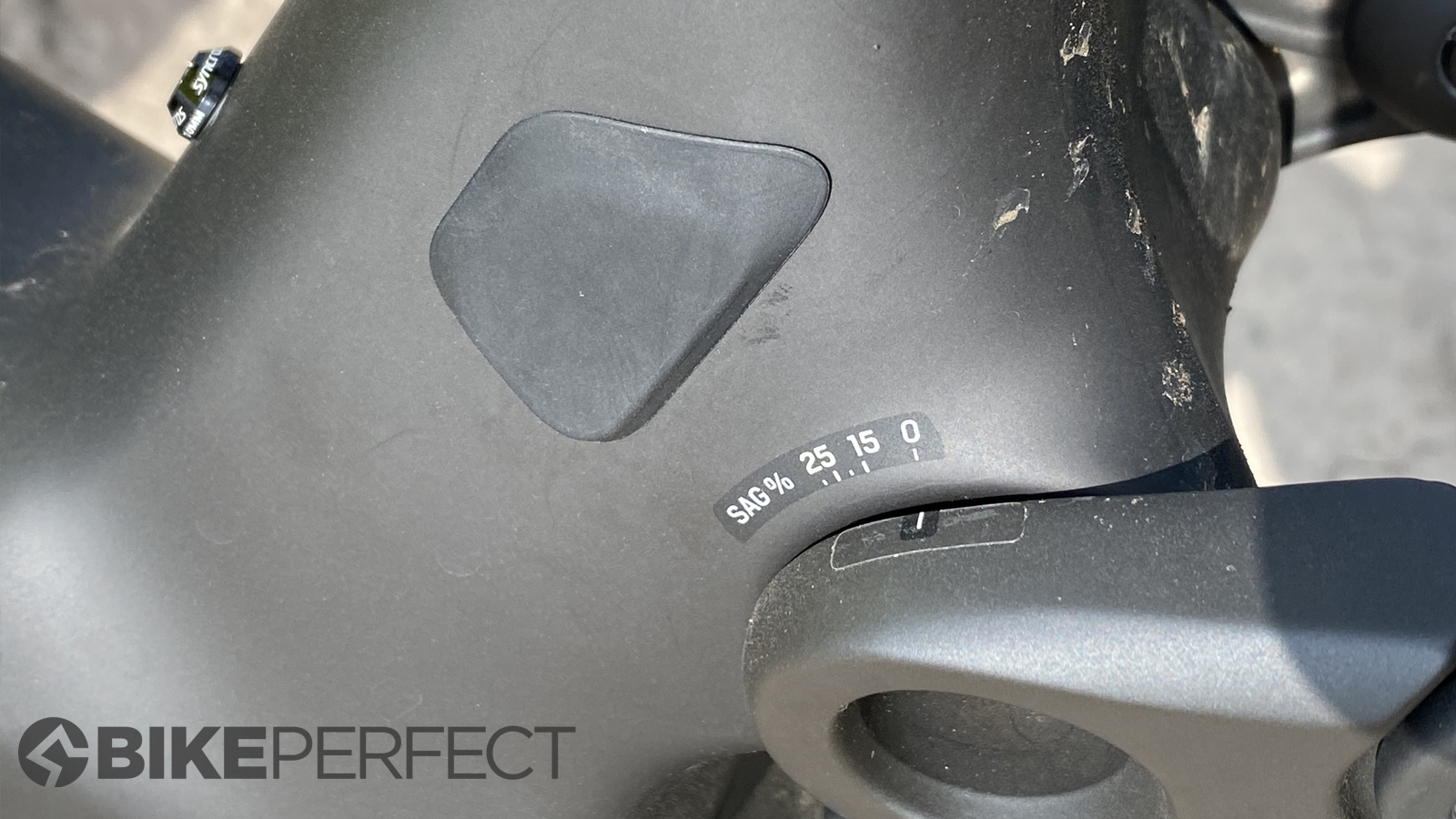

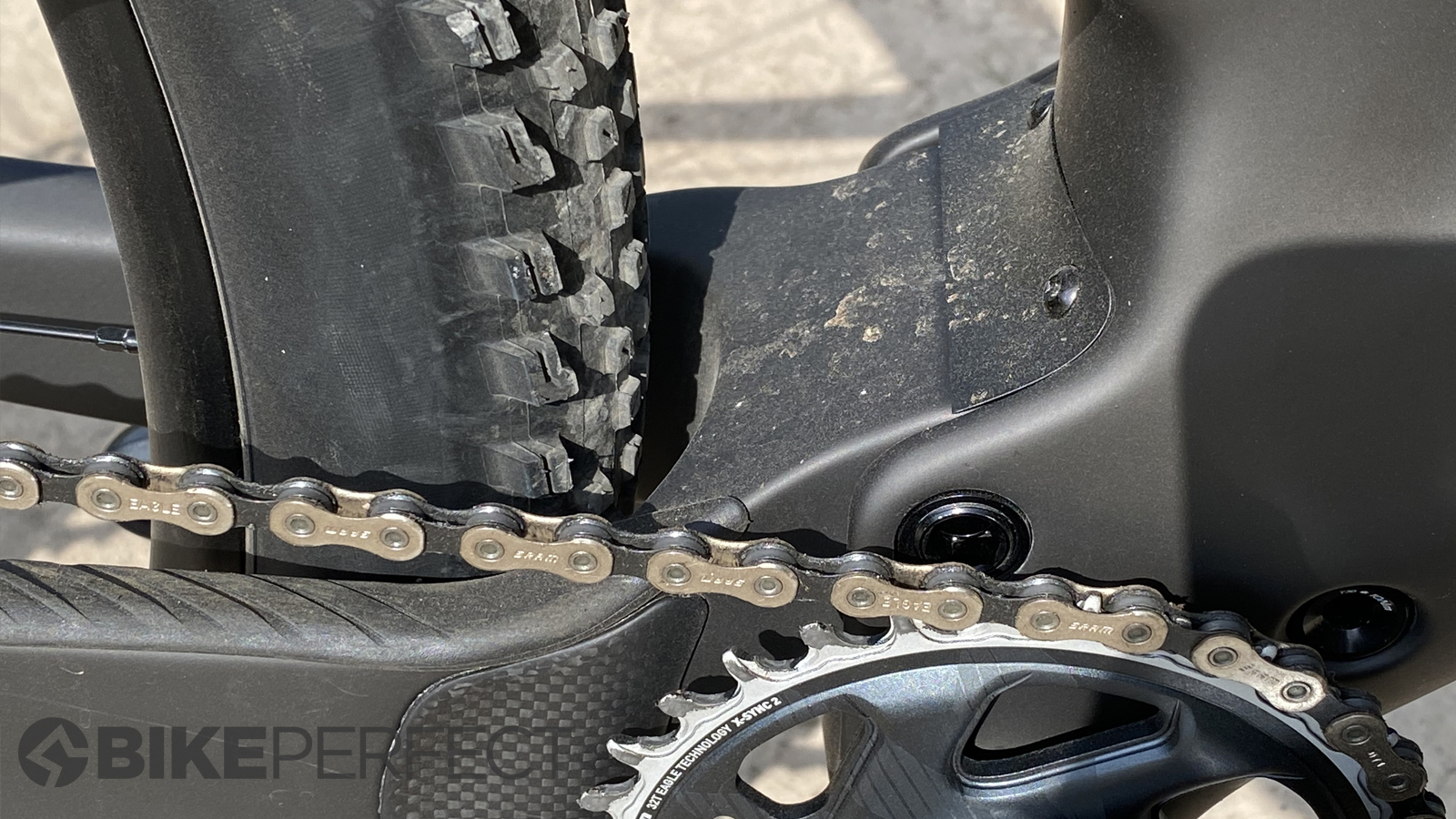
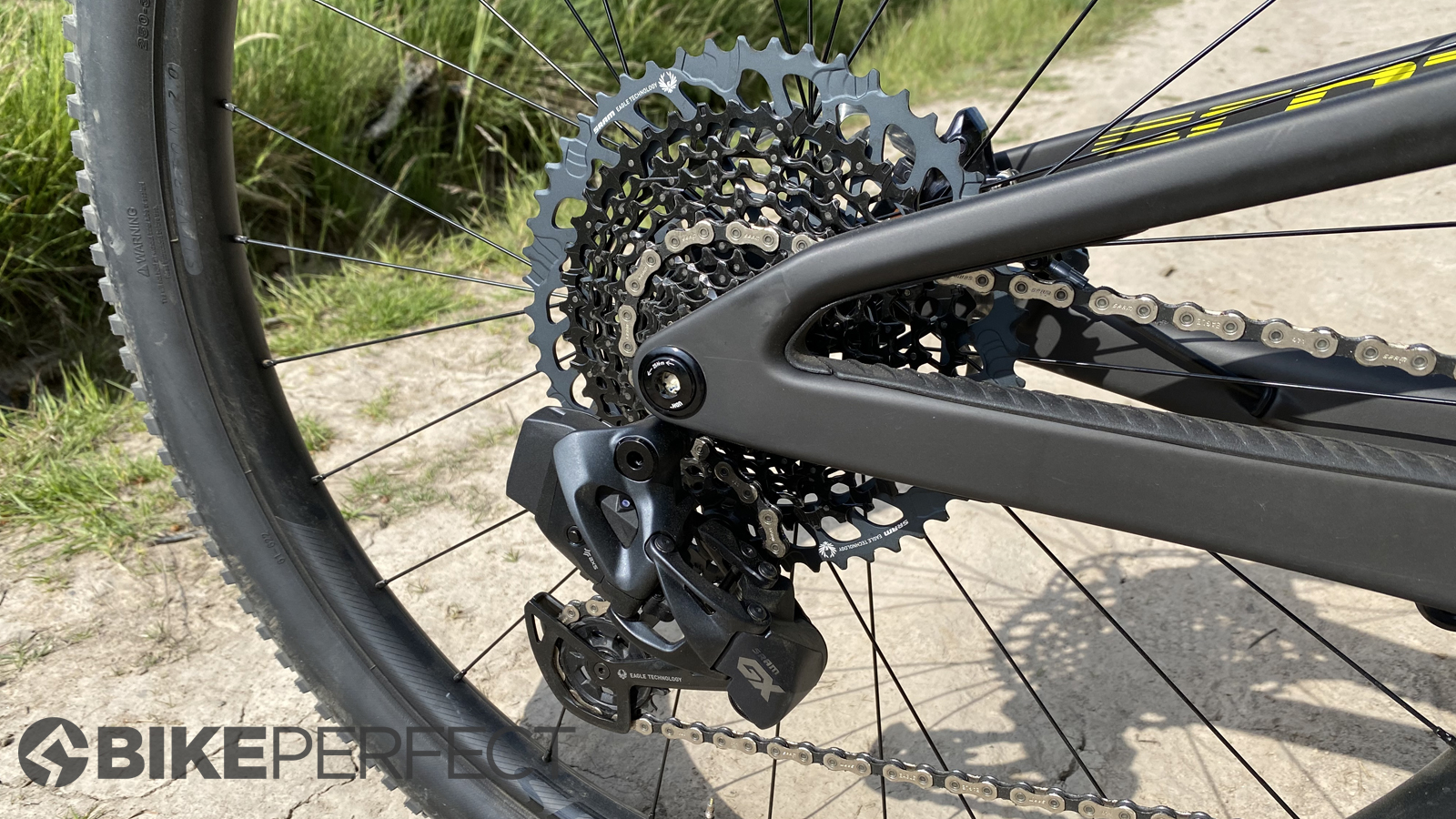
Design and geometry
Scott bought out fellow Swiss company Bold a couple of years ago, so it’s not a complete surprise to see them adopting its internal shock design, but the new Spark certainly isn’t just a rebadging exercise and it’s radical for other reasons, too. The big, short-head tube not only has enough space to allow the internal brake hose (and gear cable on other models) to route through the stem and into the frame, it also features rotating headset bearing cups that let you adjust the head angle by 0.6-degrees either way.
The big, chunky down tube swells to full width at the press-fit bottom bracket and that also gives space for the trunnion-mount head end of the inverted RockShox SID Nude shock. This is a custom damper with a stroke-shortening 80mm of travel available in the ‘Traction’ setting, which sits between fully open 120mm and locked settings. Super-short dog leg upper linkages penetrate through the extra-sealed bearings to connect to the top of the shock. A big hole in the downtube allows easy access to the air valve and rebound lever (compression is fixed) for adjustment. The hole is protected by a removable plastic cover with a small rubber gasket popping out to allow access to the top bolt and the travel check O-ring.
Setup is also simplified by an indicator on the offside linkage knuckle that references an arrow on the super-sized seat tube base. The chainstays are massive too, with all suspension-related flex happening in the short, low-slung seat stay sections.
There’s still room for a 2.4in rear tire plus two bottle cages. The broader bottom bracket section uses a wider 55mm chain line so you can run a 40 tooth chainring if you’ve got the legs for it. Other practical touches include a pull-out 6mm, T30, T25 tool in the rear axle handle and ribbed rubber-slap protection on the chainstay.
Because all the shock stress is buried in the belly, the top section of the seat tube and the flat, light section top tube itself are built in one super-light section. This means the lightest Spark frames using the HMX SL composite layup come in at just 1,870g complete with shock and all hardware. This Team Issue AXS bike uses the 2,150g HMF fiber but there are also 1,990g HMX, 2,590g HMF Hybrid (alloy rear end) as well as a full alloy version (2,990g).
They all get the same features and geometry though with a 67.2-degree base head angle, 76.6-degree seat angle, 470mm reach, 438mm chainstay, and 330mm bottom bracket height on a size large. If you’re particularly small or tall though it’s worth noting that all the different material frames only come in four sizes, with no XS or XXL options.


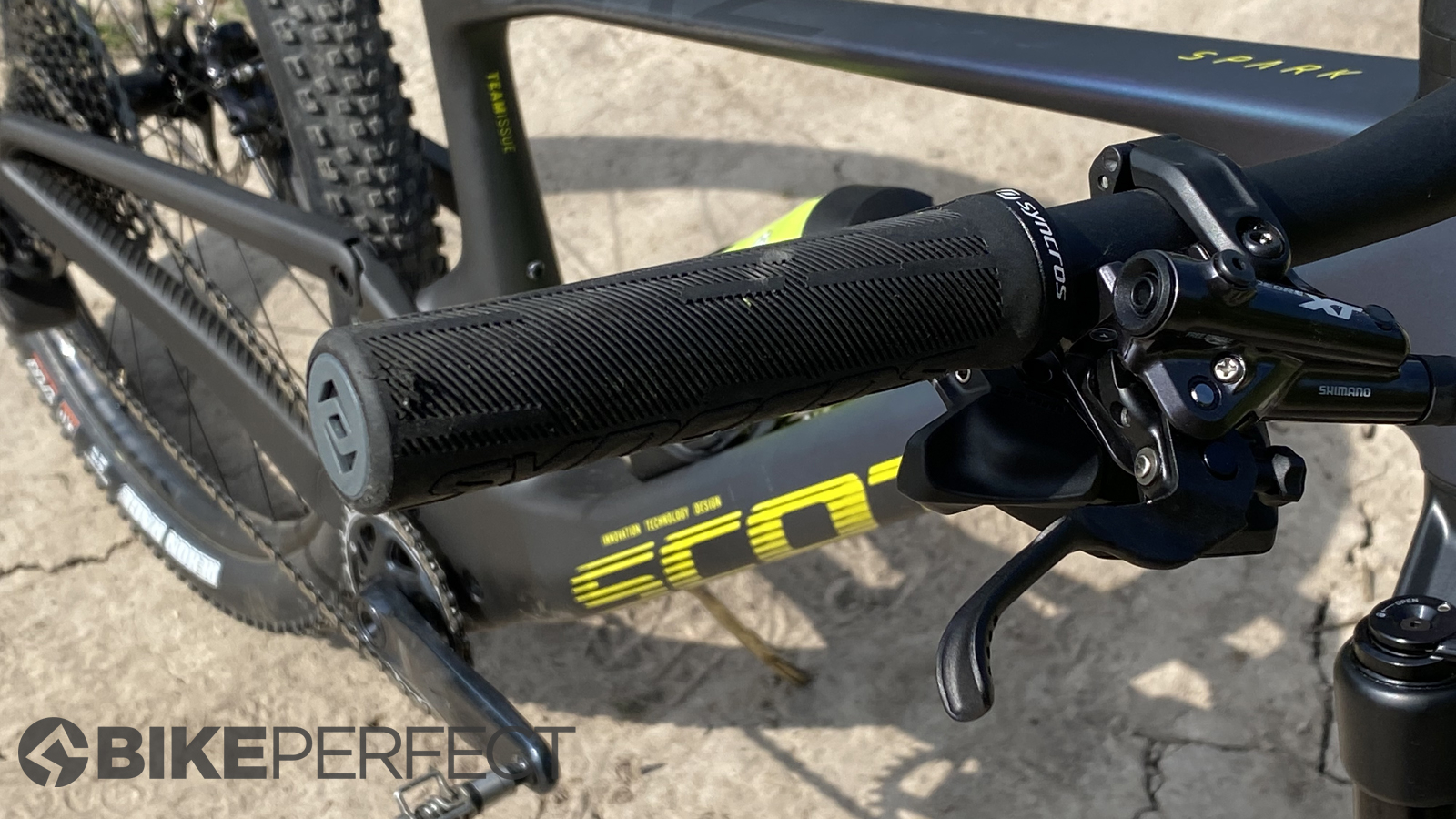
Components and build
While the previous Spark RC had 100mm of travel front and rear, the new Spark increases travel to 120mm at both ends to reflect the rowdier nature of World Cup XCO courses. That means you get the 35mm legged RockShox SID fork which is impressively light, but not as super light as the skinny 32mm legged SID SL. The Select also has a simpler, heavier damper than the top-spec Ultimate although you can upgrade that if you want.
Following in the tire prints of multiple World and World Cup Champion Nino Schurter, the Team Issue rolls on 2.4in wide Maxxis tires sitting on 30mm wide Syncros rims. This bike gets mid-weight alloy rims and steel spokes not the freaky light full-carbon wheels of the $12,999.99 / £11,999 RC SL EVO build.
The SRAM GX AXS drivetrain with alloy crank arms is mid-range too, but it’s the latest AXS wireless version for maximum control-tuning and minimum clutter. Despite the batteries and motor, the lack of cables means it’s only 45g heavier than conventional GX, too.
It’s not all SRAM though as Shimano supplies the two-cylinder XT brakes with a 180mm front rotor and small 160mm rear. Scott's own accessory brand Syncros supplies the 740mm wide flat bar and cable-smuggling stem with 10mm length increases from the smallest size meaning our large measured 70mm in length. Another nod to Nino is the use of a fixed-length alloy post, although the frame has the appropriate routing for a dropper and you can add a lever onto the underbar TwinLoc shock remote.

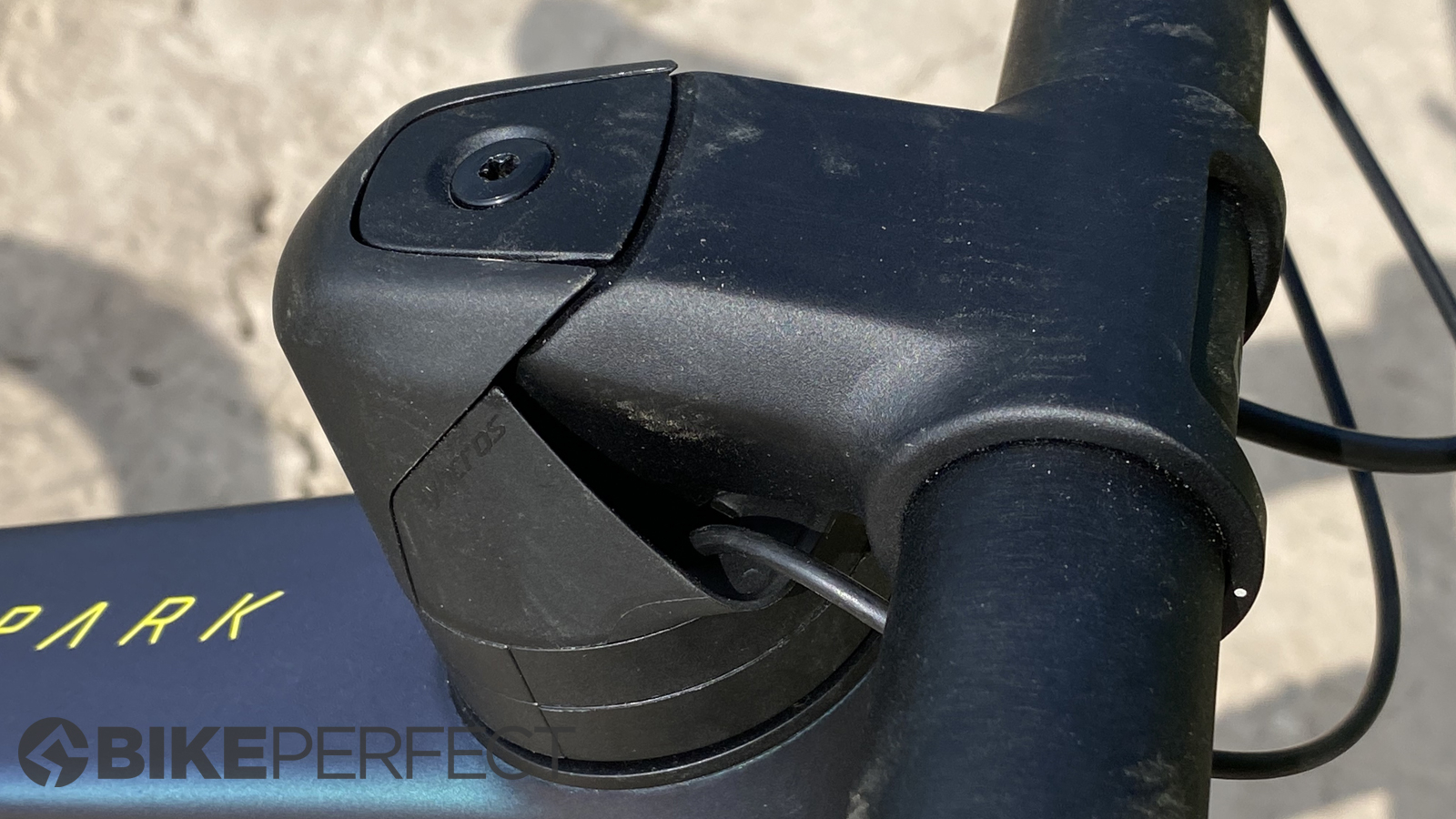
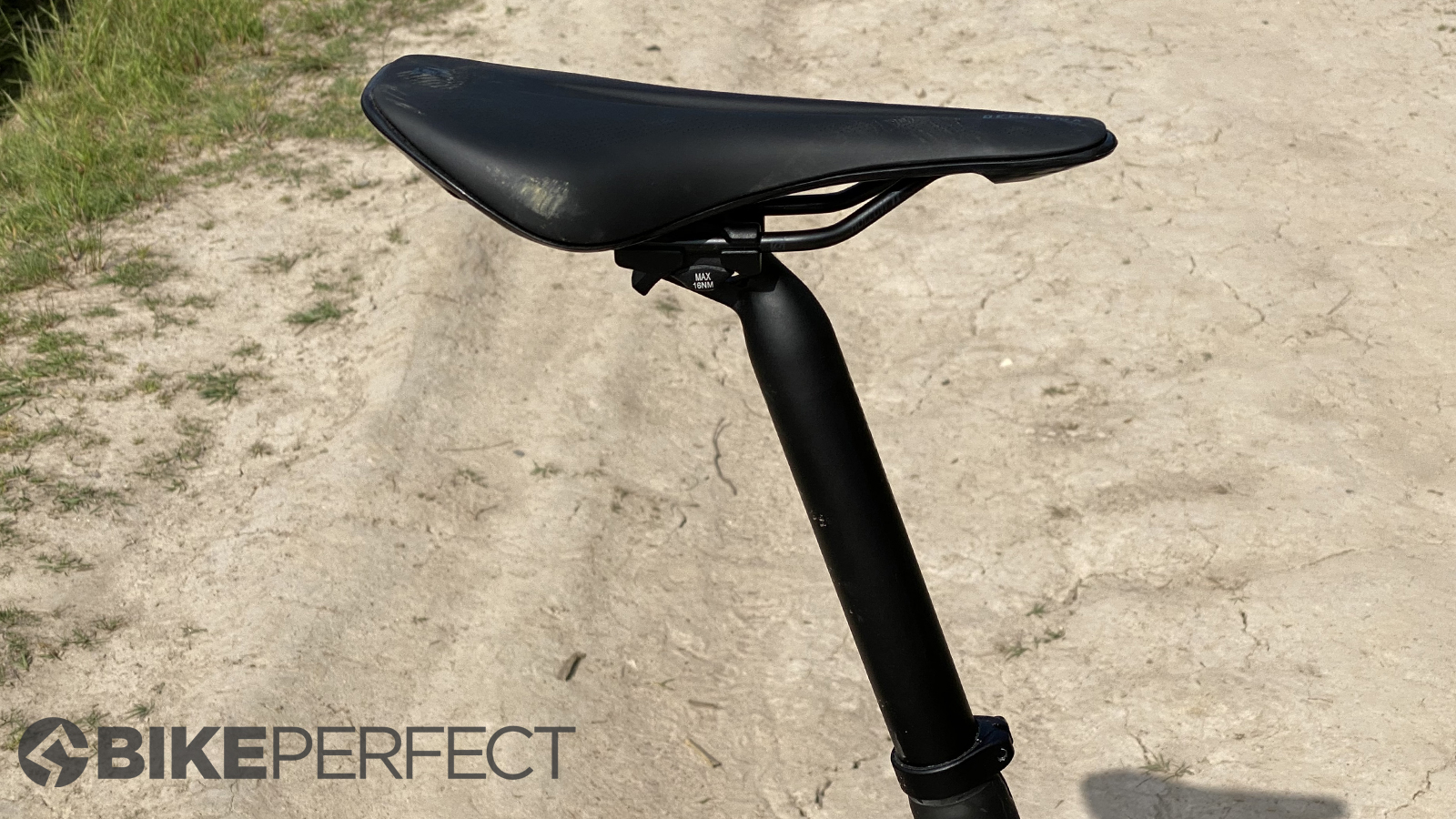
Ride, handling and performance
While the outstandingly clean looks of the Spark are causing a serious stir, it’s the overall performance that matters, and Scott has aced that, too.
Set the suspension up at 25 per cent using the external guide (it’s actually the saggiest line on the gauge) while leaving the compression lever fully open and the rear suspension is impeccably balanced. It takes a little while for the SID fork and shock to fully bed in, but once smoothed out it skims roots and smaller rocks promoting better traction and speed without feeling soft. In fact, you’ll have to run the large-volume tires pretty low (we settled on 18psi front and 22 rear for a 69kg rider) to stop them skipping too much and reap their full ‘flow-over’ potential. The evolved Spark suspension kinematics means even with a flex-stay rather than rear-pivot setup, there’s very little bounce or wallow if you’re grinding gears or going full gas out of the saddle. It doesn’t have the normal hyperactive rebound trait of flex-stay bikes when you hit something big so you can hit corners and rock gardens hard and fast, and be confident that it’ll stay totally stable and controlled.
The same can be said of the 35mm legged SID fork up front, and unlike most race-weight bikes, there’s no twisting and writhing from either end of the frame when you’re working it hard. As a result, it’ll hold a tight line through boulders and suck up serious drops without panicking. It's confidently connected and informative out on the trail, and despite the myriad control modes, Open mode is all you need. Pushing the TwinLoc lever into ‘Traction mode’ shortens the rear travel to 80mm and ramps up the progression further to give you a physical and psychosomatic boost up power climbs or when you’re railing berms hard. Then you’ve got fully locked for charging the smoothest off-road climbs and fire road sections.
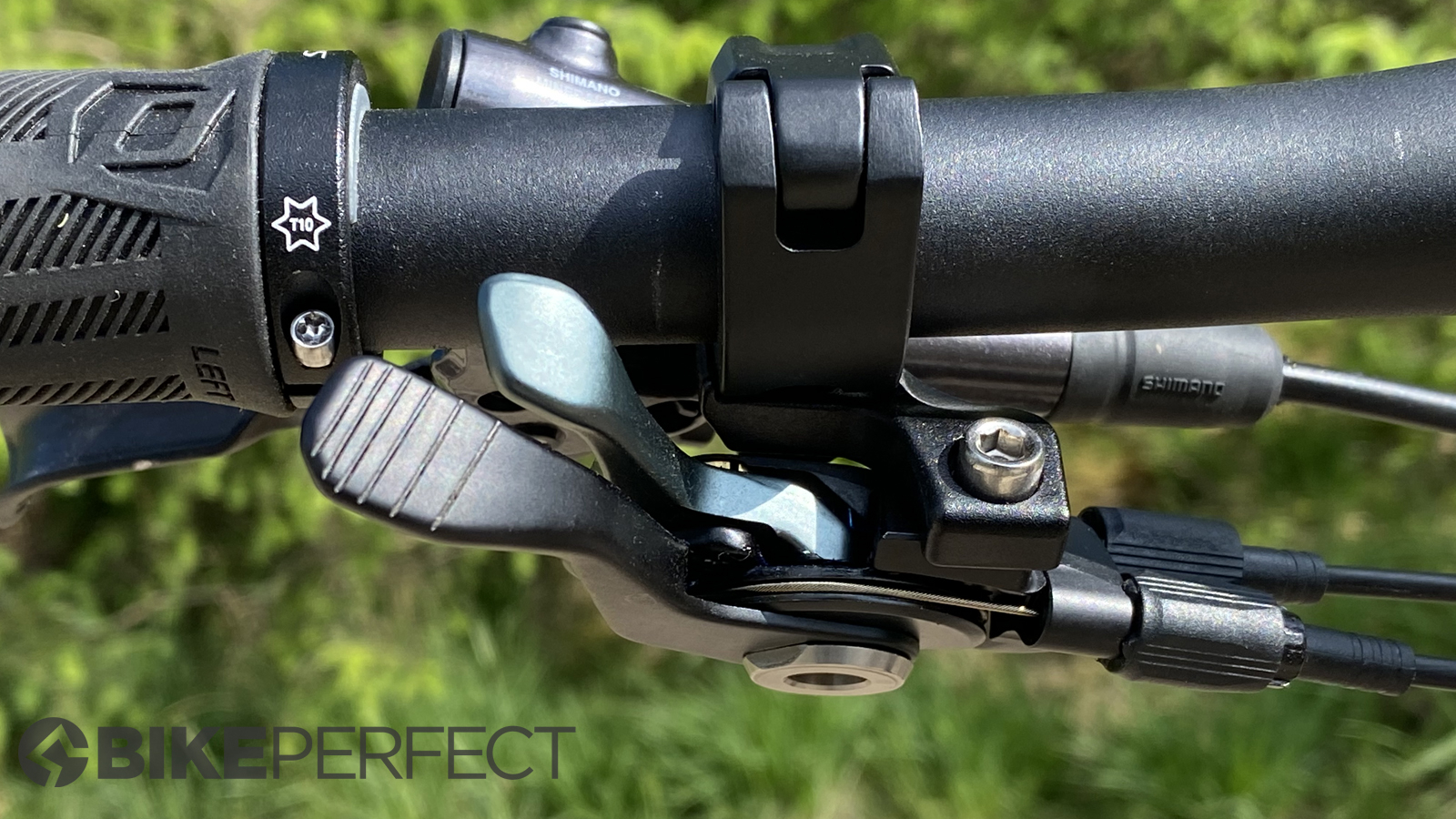
While it’s not fully ‘downcountry’ stretched and slackened out, having a bit more reach than most race bikes adds a noticeable split second more time to respond to trouble. It also keeps the 67-degree head angle nicely balanced between speed, stability and agility. It’s so precise and poised that even the relatively narrow bars and long stem acting through what’s essentially a slick front tire didn’t make it feel nervy when things got fast and loose. While we didn’t get the chance to go bar-to-bar on a crowded start line, we were still glad of the extra clearance in tight tree situations and the soft-ended grips mean you can overhang your hands if you do want more leverage. Scott now offers various stem and/or bar mounts for GPS and lights - it's available on the fully integrated carbon cockpits, too, so that’s a major marathon race/24hr event niggle sorted.
The steepened seat angle, short head tube and flipped stem keep the front wheel tracking accurately on technical climbs and running it in ‘Traction’ raises the effective ride height for more pedal clearance and ‘claw-your-way-up’ poise, too.
While the 11.83kg weight (large) doesn’t sound stunningly light, it’s still feathery enough to come up behind people on climbs so fast they think you’re on an e-MTB. It’s also super easy to accelerate and flick and pop in all situations, especially as landings are so controlled and precise. You also need to put that weight into context with its peers rather than dream-spec racers. It’s 100g lighter than Trek’s Top Fuel 9.8 GX ($5,999.99) with similar travel and a dropper post. It’s also exactly the same weight as Specialized’s Epic Comp which only has 100mm of travel, no dropper, skinny wheels and a much whippier frame. Comparing value works out well for Scott, too. The Specialized has a lighter frame but you only get a RockShox Reba fork and Shimano SLX kit. The Trek has carbon wheels but they’re not actually light, the frame is heavier and you only get analog GX Eagle not wireless yet it costs $500 more. Even the direct-sell Canyon Lux CF8 ($4,799.00 / £4,400) gets SRAM’s wired XO1 rather than AXS and despite having only 100mm of travel, carbon wheels and 2.25in tires it’s not lighter either. If you can’t stretch to the RC Team Issue model, it’s worth noting that the Spark RC Comp gets the same frame with Fox suspension and is only 700g heavier for just $3,999.99 / £3,299.
Back to the Team Issue, though... The GX AXS gearing isn’t just flawless in its instant, multi-point actuation, it also stops the front end from getting overcrowded with cables. We had no issues with the XT brakes either and the small rear rotor is actually a smart choice unless you want to skid the rear Maxxis Ikon raw straight away.
While we have huge respect for what Nino - and other old-school racers - can ride without a dropper post, we do think the Team Issue AXS deserves a dropper post to open up its full potential for the majority of riders' skill levels. We certainly didn’t get close to realizing just how fast it could rip through corners, charge through rocky sections or send gaps and drops until we added a manual ‘rodeo’ dropper post.
The fact that the four more expensive RC models come with a dropper post also makes the lack of one on lower-spec models - where arguably buyers/riders will be less experienced/skilled - more puzzling. Especially on a bike where there's the weight of a bigger fork and tires to boost control and overall speed. However, while that’s a criticism of the chosen spec, it's actually a vindication of just how versatile and capable this bike is as, once we could lower the saddle, we were rallying it seriously hard. Plus if you consider likely global sales patterns for an XC bike like this (or check pictures from most XC races/racers) we can see why Scott has done it.
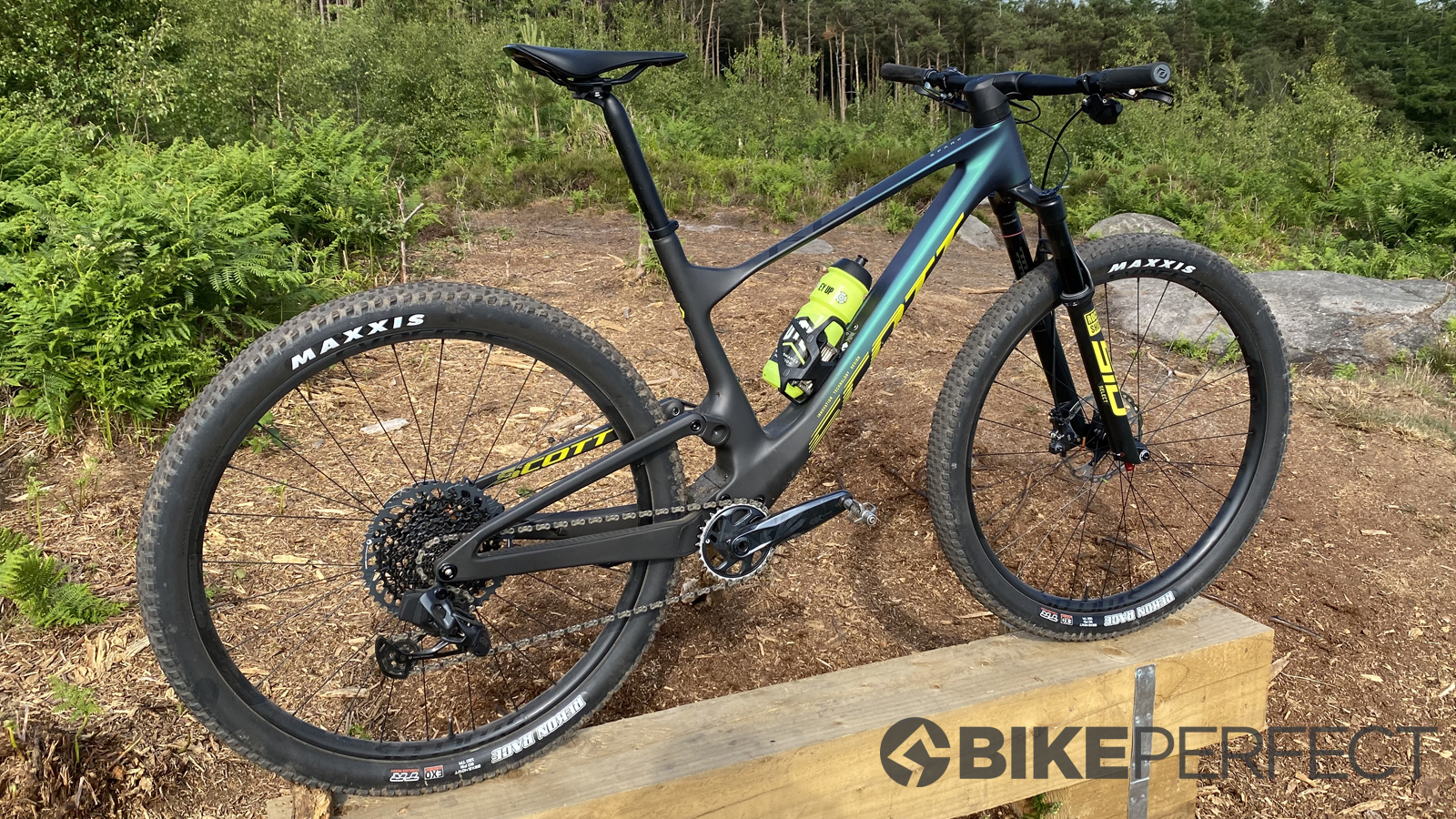
Verdict
A narrow flat bar, downturned stem and fixed seat post confirm that the RC is a racer at heart, but it’s a brilliant example of just how far race bikes have come in terms of capability, confidence and big-grin speed.
The relaxed geometry and immaculately controlled 120mm suspension mean it doesn’t hesitate to attack serious rocky sections and long descents as hard as it does vertical power climbs or long drags where the remote control shocks really come into their own. While bigger tires and the stouter SID add weight, they also add the control to let the excellent frame and suspension really shine.
It’s still light enough to fly compared to a conventional trail bike and no heavier than much more flimsy-feeling shorter-travel bikes. If you want more of a trail bike feel from this Spark frame then the 900 series models use a 130mm fork, 760mm wide bar with dropper post and knobblier tires as standard. They do come in nearly a kilo heavier than the RC bikes at most price levels though and we’d definitely argue it's worth sampling before assuming it can’t handle challenging trails or fly up climbs.
Tech Specs: Scott Spark Team Issue AXS
- Model name: Scott Spark Team Issue AXS
- Discipline: Cross-country
- Price: $5,499.99 / £4,599.00
- Head angle: 67.2 -degrees
- Frame material: HMF Carbon
- Size: Large
- Weight: 11.83kg
- Wheel size: 29in
- Suspension: RockShox SID Select RL3 120mm travel, 44mm offset/RockShox SID Nude RL3 80/120mm travel
- Drivetrain: SRAM GX Eagle AXS 10-52T 12-speed wireless gearing and shifter
- Cranks: SRAM GX Eagle 32T chainset
- Brakes: Shimano XT M8100 brakes with 180/160mm rotors
- Cockpit: Syncros Fraser 1.5 XC 740mm flat bar and XC 1.5 55mm stem
- Wheelset: Syncros Silverton 2.0 30 wheelset
- Tires: Maxxis Rekon Race EXO TR 29 x 2.4in tires
- Seatpost: Syncros Duncan 31.6mm fixed post
- Saddle: Syncros Belcarra 1.5 Ti saddle

Guy Kesteven has been working on Bike Perfect since its launch in 2019. He started writing and testing for bike mags in 1996. Since then he’s written several million words about several thousand test bikes and a ridiculous amount of riding gear. He’s also penned a handful of bike-related books and he reviews MTBs over on YouTube.
Current rides: Cervelo ZFS-5, Specialized Chisel, custom Nicolai enduro tandem, Landescape/Swallow custom gravel tandem
Height: 180cm
Weight: 69kg
